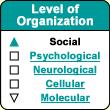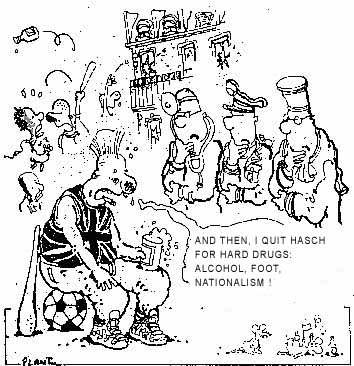| |

 |
 |
Over the past few years, there has been much
discussion of “doping” in the world of sports. Like people in many
other walks of life today, athletes are subject to tremendous pressure to be productive
and to perform. Hence more and more of them are engaging in doping behaviour to
improve their performance.
Doping behaviour means consuming certain
substances to cope with real or perceived obstacles in situations such as sports
competitions, school examinations, job interviews, and public speaking. In the
world of sports, where performance often translates directly into endorsement
income, athletes since the 1950s have been using all kinds of substances (mostly
testosterone derivatives) to increase their strength, power, endurance, and aggressiveness
and to recover from injuries more quickly. But these substances have secondary
effects, including acne, hair loss, masculinization of women’s bodies, and
even cancers and cardiovascular problems. They can also lead to physical dependency. | | | Certain drugs are prohibited
in certain cultures for instance, alcohol
in Islamic countries, and cannabis,
cocaine,
and opiates
in Western countries. But how dangerous a drug actually is has nothing to do with
whether it is made legal or illegal in a given country (see box below). The legal restrictions
to which each drug is subject vary from one historical period and one country
to another. And the continuum runs from total prohibition to freely permitted
sale. In Canada, for example, cocaine, ecstasy,
LSD, and cannabis are all illegal substances, but the consumption of cannabis
may be allowed under specified medical conditions. However, the legalization of
cannabis is being discussed more and more in many countries of the world. Psychoactive
medications used to treat anxiety,
insomnia, and depression are legal, but must be prescribed by a physician, and
their use is strictly controlled. Nevertheless, they are still abused frequently.
Lastly, alcohol and tobacco
are legal substances that can be consumed freely. The controls over their sale
and the regulation of their use do not, however, keep them from being overconsumed
by a great many individuals.
But the traffic
in illicit drugs is a geopolitical factor that continues to have an extremely
heavy impact on our societies.
Tobacco, a legal drug, is the cause
of 20% of all deaths in industrialized countries. It is certainly one of the most
dangerous drugs, if not the most dangerous. Nicotine, its main active ingredient,
very quickly induces tolerance and psychological
as well as physical dependency.
For
the past 30 years, the tobacco companies have vehemently denied that cigarettes
were addictive, even though their own internal studies, which they kept secret,
proved otherwise. Children must be warned about the risks of tobacco between the
ages of eight and ten. By age 12, it is already too late. |
|
|





